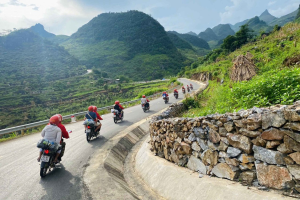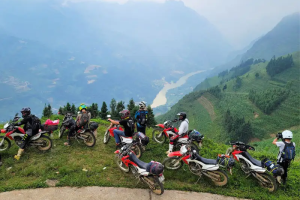If you’re doing the Ha Giang loop, chances are you want to taste the local food and specialties of this culinary diverse area in North Vietnam. If you’re adventurous and ready to immerse yourself, this is the post for you. My boyfriend Alex and I are foodies ourselves. Therefore, we have taken the time to explore, ask around and eat in the kind of places you don’t get anywhere else in the world.
Although we are vegetarian, we’ve traveled with meat eaters and got their feedback. This is why this article includes information about non-vegetarian dishes. Bear in mind most places in the Ha Giang loop are not specifically vegetarian, but have vegetarian/vegan options on their menu. If you’re vegan or vegetarian, or are interested in veggie food, you might also want to read our Guide For Vegetarians In The Ha Giang Loop.
It’s truth. North Vietnamese cuisine has gained a reputation for not being as spicy or bold as the food in the centre or the south of Vietnam. This is due to the climate and terrain. The rough mountainous regions and the changing weather make it difficult to grow a big diversity of food.
However, we’ve found that, whereas down south the flavours are IN the food, up north the flavours are ADDED to the food. In every restaurant and stall up north you’ll see the chillies, fish sauce, ginger sauce, soya sauce, salt, lemon… being served on the side. This way, everyone seasons their dishes to their own taste. So don’t be shy with the seasonings if you feel your dish is too bland. And if you’re missing something – ask!
That being said, let’s go to our business. Here is a list of local dishes to try while doing the Ha Giang loop:
1. Bánh cuốn
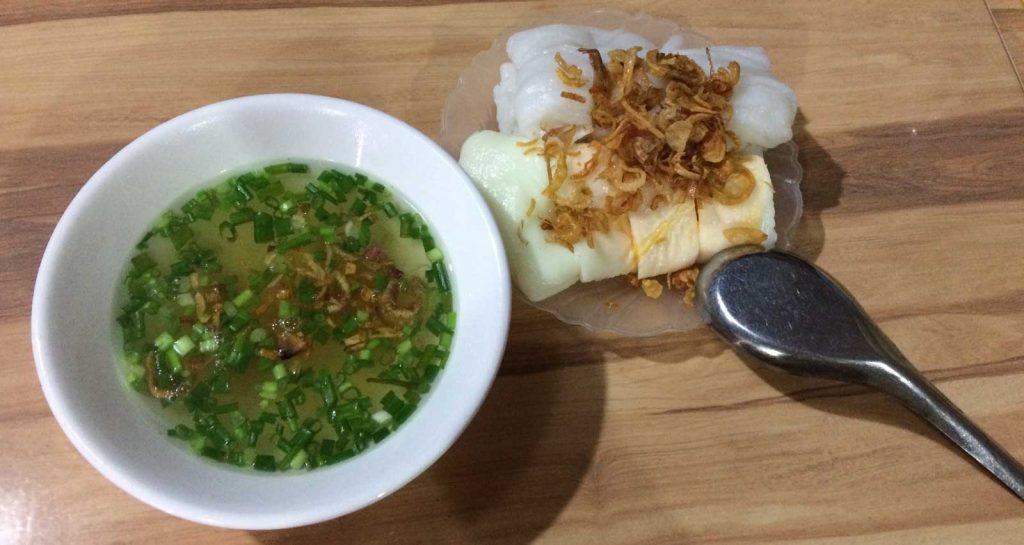
It’s a steamed folded rice ‘pancake’ filled with pork/egg and mushroom, topped with dried shallots and accompanied by a delicious broth. We tried the bánh cuốn trung (egg bánh cuốn) and loved it. To eat it, put a bit of the pancake on the spoon and dip it in the broth – this will allow the pancake to absorb the flavours of the broth. You can see this dish advertised in many places, but we recommend trying it here in Ha Giang, and here in Dong Van.
2. Cháo Ấu Tẩu (Au Tau bitter porridge)
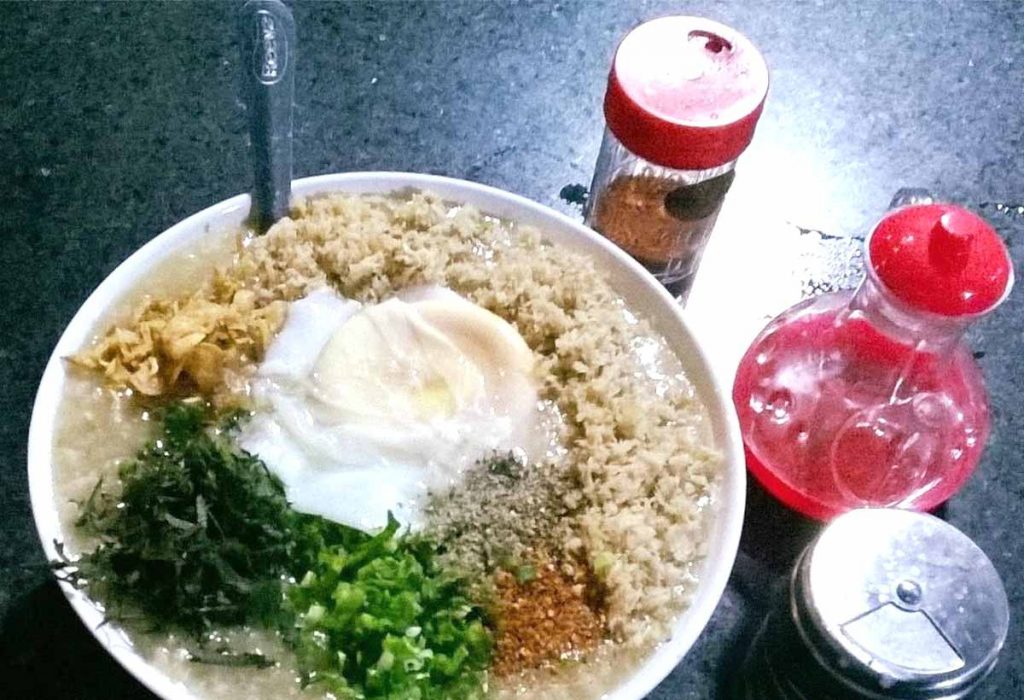
A porridge made with a bulb called ‘Au Tau’. This food is a specialty of Ha Giang and eaten at night. The bulb is initially toxic, but the way they cook it (over 4 hours with herbs, meat and sticky rice), makes it perfectly safe to eat. This dish takes a lot of preparation and effort, and is also considered medicinal! So if you’re feeling brave, try it along the loop, especially here in Dong Van.
3. Local Phở
The variations of Pho here are lighter and generally less spicy than the ones down south. So you get more flavour from the herbs or meat they use (it also has little to no MSG!). Phở has become our favourite breakfast/lunch -it’s light, filling and nourishing. It’s also likely to get cold up in the mountains, so having this will surely warm you up! We recommend trying the Phở at Bún Cá Thiên Vũ in Dong Van, Restaurant Hoan Hao in Tam Son, and at Nguyen Quoc Restaurant & Coffee in Du Gia.
For vegetarians/vegans: it’s difficult to find a Phở dish that is 100% vegetarian (“an chay”), even if they say it is. Most of the time they cook it with chicken stock, so make sure to double check!
4. Mixed coloured sticky rice
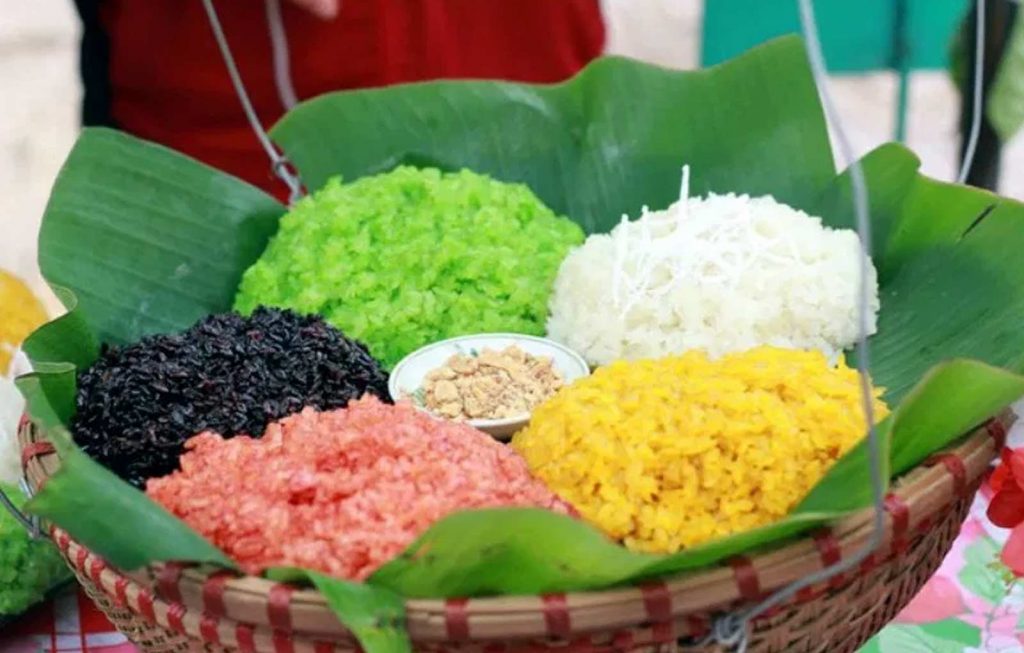
Traditional of the Tay ethnic minority, it’s a rice to which they add natural food colouring. For example, the red comes from the red sticky rice, yellow from ginger, purple from black sticky rice…. The different colours symbolize the 5 elements: Metal, Wood, Water, Fire, Earth. It’s tasty on its own or as an accompaniment to another dish (eg. pork, egg, tofu…). You can find it in Dong Van sold by street vendors (around here) or in the Sunday morning markets. Look out for vendors scooping out from big banana leaves.
5. Lau (Vietnamese hot pot)

It consists of a simmering metal pot at the centre of the dining table. The ingredients are put all around: sliced beef, chicken or pork meat, fresh vegetables, tofu, mushrooms… When the hotpot is simmering, its ingredients are put into the pot and are cooked right at the table. You can try a good one at the Green Karst, in Dong Van. They can perfectly prepare a vegetarian version for you.
6. Sweets & snacks
Thang Den
A soothing and warm ginger, peanuts and sticky rice ball soup. Usually sold in the afternoon or evenings in the centre of Dong Van. The portions are small and made to warm one up after a cold day driving or in the mountains.
Chè
My favourite! It is a layered dessert found all over Vietnam, but here up North you can try the different local chè’s, which you might not find in other areas. In Dong Van, there is a chè stall in the centre (outside here), and if you ask for Chè Thap Cam you will get a delicious bowl of mixed jelly, tapioca balls, different types of sweet beans, topped with coconut milk, peanuts and sweet desiccated coconut. Yum! You can also find delicious chè here in Ha Giang.
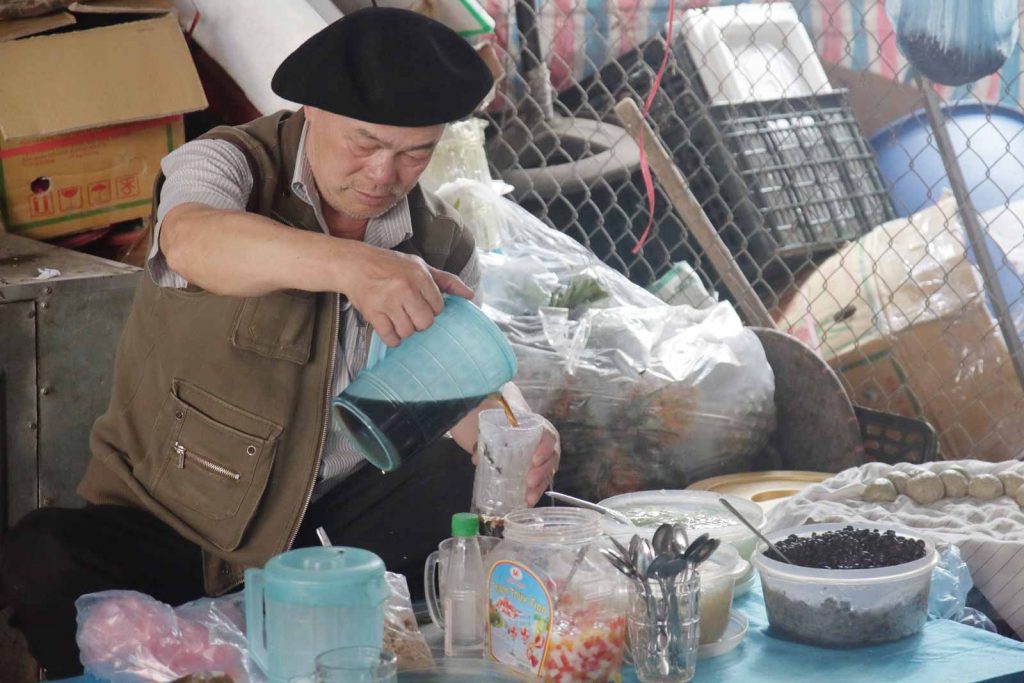
Local snacks
In the markets or streets, you can find an array of fried foods, like fried doughballs, fried ‘pancakes’ filled with sweet potato or corn, fried ‘churros’, and fried bread. There’s also steamed buns (pork, custard or plain), butter popcorn, fried corn, puffed rice cakes, and buckwheat or rice flour cakes with honey (a must try!).
Aside from the ‘single’ dishes mentioned above, the way most people eat with family and friends is ‘Tapas style’. Each person has their own bowl of rice and chopsticks, and they pick what they want from the array of dishes on the table or mat. While staying at QT Du Già Guesthouse, we had the privilege to taste many different dishes this way, such as herb omelettes, tomato tofu, stir fried vegetables, veggie spring rolls, fried chicken, fried pork… Sharing food this way brings everyone together at the table, and is a great way to experience a more traditional meal! This is one of the reasons we recommend staying at a Homestay while doing a tour of the Ha Giang loop.
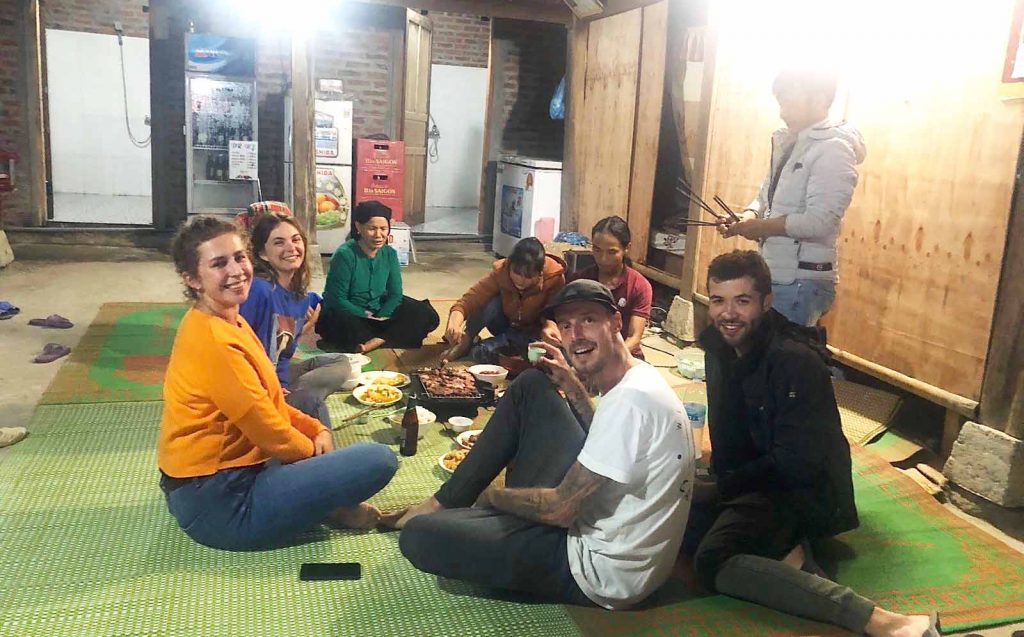
I hope you have fun and take your time exploring all these different local delicacies and many more which might not be as known by foreigners yet. It’s certainly a part of the trip worth exploring, and one which will deepen your experience and enrich it!

